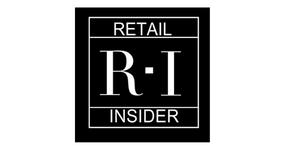Rear-end collisions are among the most common types of vehicle accidents on the road, often resulting in significant injuries and damage. One frequent cause of these incidents is the failure of brake lights, which are crucial for communicating a driver’s intentions to slow down or stop to following traffic. When brake lights are not functioning, the driver behind may not have sufficient warning to react appropriately, potentially leading to a preventable collision. That is why it is important to determine who is liable for your injury when brake lights fail.
Liability Analysis
This section elaborates on the legal principles and processes involved in demarcating liability for rear-end collisions stemming from brake light malfunctions.
Legal Framework for Brake Light Functionality
Under statute and common law, vehicle owners and manufacturers are obligated to ensure their brake lights are operational. Laws across various jurisdictions explicitly require that all motor vehicles must be equipped with functioning brake lights. These regulations, often derived from motor vehicle safety standards, establish the groundwork for liability in a failure.
In establishing liability, it is essential to clarify the duty of care owed by the different entities involved in the maintenance and operation of a motor vehicle. Should an accident occur due to non-working brake lights, the legal framework specifies the parties that may be held responsible, which could include:
- Vehicle Owners: They must regularly inspect and maintain their vehicle’s brake lights.
- Auto Manufacturers: They shall be held accountable if the malfunction is traced back to a manufacturing defect.
- Mechanics and Repair Shops: If prior servicing resulted in the defect, liability may extend to the professionals involved in the vehicle’s upkeep.
- Commercial Vehicle Operators: Companies with fleet vehicles must adhere to stringent checks and maintenance routines.
The determination of fault must be conducted within the confines of these legal expectations.
Determining Accountability in Rear-End Accidents
The analysis of a rear-end accident intricately considers the chain of events leading up to the injury. To determine who is liable, the process involves:
- Proof of Brake Light Malfunction: Establishing that the brake lights were not functioning at the time of the accident.
- Causation: Linking the injury directly to the non-working brake lights.
- Breach of Duty: Demonstrating that one or more parties failed to fulfill their legal responsibility for brake light maintenance.
Responsibility is assigned based on evidence that may include:
- Maintenance records
- Vehicle inspections prior to the incident
- Repair shop documentation
- Witness testimony
In cases where the vehicle owner is deemed negligent in maintaining their brake lights, they may bear the brunt of liability. Conversely, if a defect inherent to the vehicle’s design or manufacturing caused the accident, the manufacturer could be held liable. The focus is on a meticulous examination of the facts, devoid of assumptions, to ensure a fair attribution of legal responsibility.
Preventative Measures and Safety Protocols
Ensuring the functionality of brake lights is vital to avoid rear-end collisions. Retailers and consumers both play crucial roles in maintaining safety standards.
Importance of Regular Brake Light Maintenance
Regular brake light maintenance is a safety-critical practice. Vehicle owners should conduct periodic checks to ensure brake lights function properly. Key steps include:
- Visual Inspections: Periodically checking that each brake light illuminates upon pressing the brake pedal.
- Replacement and Repair: Promptly replacing any faulty bulbs or fixing electrical issues that prevent illumination.
Vehicle manufacturers recommend a maintenance schedule, typically available in the owner’s manual, which stipulates how often brake light checks should occur. Adherence to these guidelines helps to ensure that a vehicle follows all safety regulations and reduces the risk of liability in the event of a collision.
Retailer Responsibilities and Consumer Awareness
Retailers are responsible for providing accurate information on brake light functionality and replacement needs. Responsibilities include:
- Product Information: Clear labeling and guidelines on selecting the appropriate brake lights for specific vehicle models.
- Staff Training: Ensuring staff are knowledgeable about the products and can advise consumers competently.
Consumer awareness campaigns are crucial as they inform vehicle owners about the significance of working brake lights and the potential consequences of neglect. Key information disseminated through these campaigns includes:
- Legal requirements: Informing about laws surrounding vehicle lighting and safety.
- Resources for maintenance: Providing information on how to perform self-checks and where to find professional maintenance services.
By increasing awareness, retailers and consumers can collaborate to prevent rear-end accidents due to non-working brake lights. Ultimately, determining who is liable for an injury involves understanding maintenance responsibilities and ensuring they are met by all parties involved.



